A causal viewpoint on prediction model performance under changes in case-mix
Human Data Science ‘Content Meeting’
2025-05-22
Note
TODO: Add content to this section.
- add motivation / implication
- add that discrimination / calibration is ‘canonical’ based on e.g. TRIPOD+AI
- update empirical results with density plot and MSE test

Motivation
- clinicians use prediction models for medical decisions, e.g.
- making a diagnosis:
- observe symptoms (paralysis)
- try to infer the cause (diagnosis = stroke)
- estimating a patients prognosis
- observe patient features / risk factors (cholesterol, age)
- predict future outcomes (heart attack)
- making a diagnosis:
- these prediction models need reliable performance
- issue: potential substantive difference between last evaluation and current use
Change in setting
What can we expect from the model’s performance (if anything) in the new setting?


This paper / talk
- recap performance: discrimination, calibration
- look at the causal direction of the prediction:
- are we predicting an effect based on its causes (e.g. heart attack, based on cholesterol and age) - typical in prognosis
- are we predicting a cause based on its effects (infer presence of stroke based on neurological symptoms) - typical in diagnosis
- define shift in case-mix as a change in the marginal distribution of the cause variable
- conclude that in theory:
- for prognosis models: expect stable calibration, not discrimination
- for diagnosis models: expect stable discrimination, not calibration
- illustrate with simulation
- evaluate on 2030+ prediction model evaluations
Recap of performance metrics: discrimination and calibration
- prediction model \(f: X \to [0,1]\) (i.e. predicted probability, e.g. logistic regression)
- performance metric \(m_f: P(X,Y) \to R\)
Discrimination: sensitivity, specificity, AUC
- take a threshold \(\tau\), such that \(f(x) > \tau\) is a positive prediction
- tabulate predictions vs outcomes
| outcome | |||
|---|---|---|---|
| 1 | 0 | ||
| prediction | 1 | true positives | false positives |
| 0 | false negatives | true negatives |
Discrimination: sensitivity, specificity
| outcome | |||
|---|---|---|---|
| 1 | 0 | ||
| prediction | 1 | true positives | false positives |
| 0 | false negatives | true negatives | |
| sensitivity: TP / (TP+FN) | specificity: TN / (TN+FP) |
sensitivity: \(P(\hat{Y}=1 | Y=1)\)
- \(=P(X \in \{X: f(X) > \tau \} | Y=1)\) (assuming deterministic \(f\))
specificity: \(P(\hat{Y}=0 | Y=0)\)
note: sensitivity only requires data from the column of postive cases (i.e. \(Y=1\)), and specificity on negatives
event-rate: fraction of \(Y=1\) of total cases
in theory discrimination is event-rate independent (Hond 2023)
Discrimination: ROC curve and AUC
if we vary the threshold \(0 \leq \tau \leq 1\), we get a ROC curve, and the AUC is the area under this curve
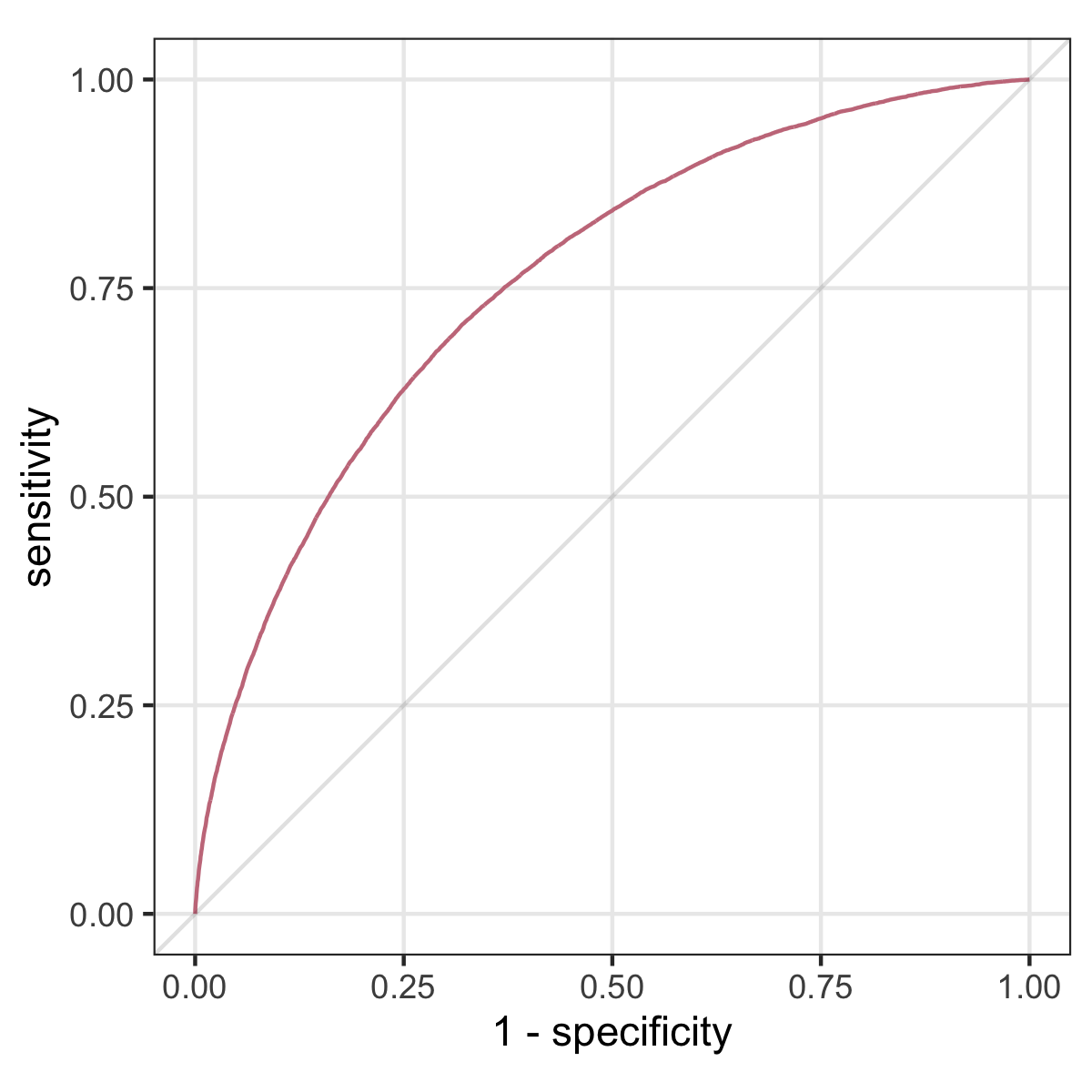
Calibration
“A model is said to be well calibrated if for every 100 patients given a risk of x%, close to x have the event.” (Van Calster and Vickers 2015)



Calibration plot
\(p(Y=1|X)\) versus \(f(x)\)

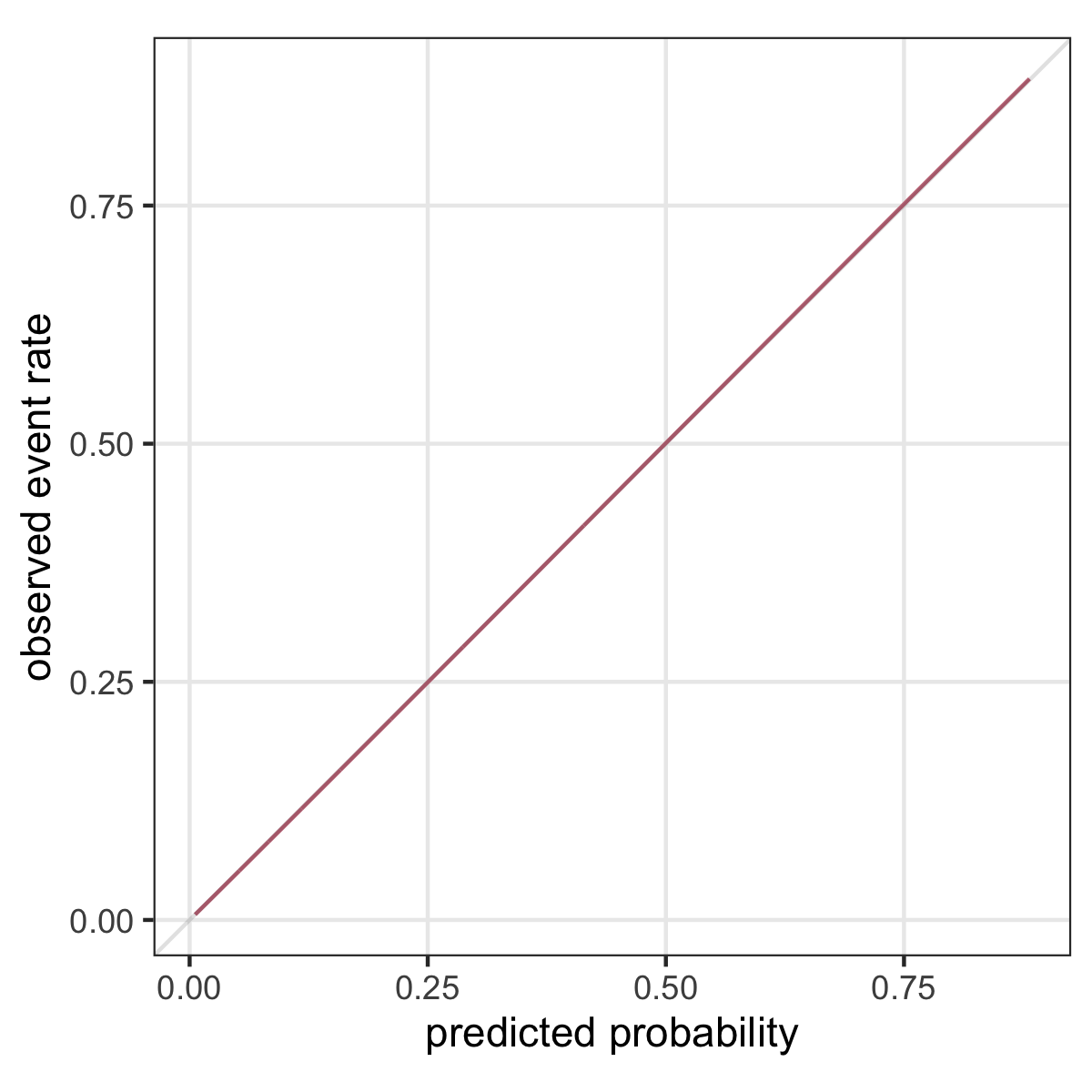
Performance metrics summary
- performance metrics for \(m_f\) are in general functionals of the joint distribution \(P(X,Y)\)
- discrimination: function of conditional \(P(X|Y)\) (features given outcome)
- calibration: function of conditional \(P(Y|X)\) (outcome given features)
A causal description of shifts in case-mix
Where does the association come from?
In prediction, we have features \(X\) and outcome \(Y\) and model \(Y|X\)
1. \(X\) causes \(Y\): often in prognosis (\(Y\): heart-attack, \(X\): cholesterol and age)
2. \(Y\) causes \(X\): often in diagnosis (stroke, based on neurological symptoms)
3. \(Z\) causes both \(X\) and \(Y\): confounding (yellow fingers predict lung cancer)
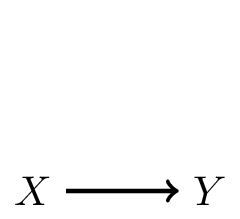
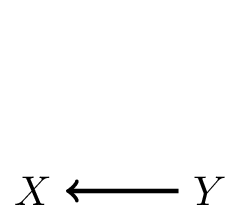
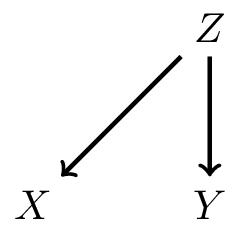
Defining a shift in case-mix
Define a shift in case-mix a change in the marginal distribution of the cause variable. Denoting environment as variable \(E\):
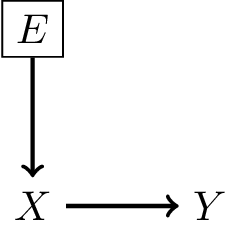
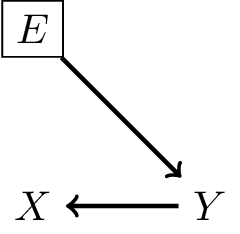
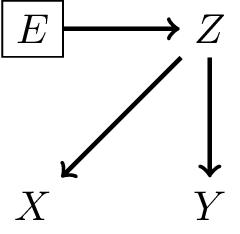
- pregnancy outcome prediction
- general ‘midwife’ population
- pregnant women with type 1 diabetes are counselled by gynaecologists in hospital
- this is filtering on patient characteristics (making distribution of \(X\) different)
- predict occurence of stroke
- general emergency center
- patients with clear neurological symptoms are sent to stroke center
- filter on outcome risk (different distribution of \(Y\))
What does this definition imply?

- in general, may decompose \(P(X,Y,E)\) as:
- \(P(Y|X,E)P(X,E)\)
- \(P(X|Y,E)P(Y,E)\)
- …
- looking at the DAG: \(P(Y|X,E) = P(Y|X)\)
- in words: \(P(Y|X)\) is transportable across environments
- because there is no arrow from \(E\) to \(Y\), \(X\) blocks effect of \(E\) on \(Y\)
- \(P(X|Y,E) \neq P(X|Y)\)
- in words: \(P(X|Y)\) is not transportable across environments
- implication for causal (prognosis) prediction:
- calibration is functional of \(P(Y|X)\), thus stable
- discrimination is functional of \(P(X|Y)\), thus not stable
- for anti-causal (diagnosis) prediction: the reverse
- main result: discrimination or calibration may be preserved under changes in case-mix, but never both
Why define a shift in case-mix this way?
- cause is temporally prior to effect, filtering at least on cause may be likely in many settings
- filtering on both: anything goes, cannot say anything about expected performance based on graphical information
Illustrative simulation and empirical evaluation
Simulation setup
\[\begin{align*} \label{eq:dgm-prognosis} \text{prognosis:} & & \text{diagnosis:} & \\ P_y &\sim \text{Beta}(\alpha_e,\beta_e) & y &\sim \text{Bernouli}(P_e) \\ x &= \text{logit}(P_y) & x &\sim N(y, 1) \\ y &\sim \text{Bernoulli}(P_y) & & \end{align*}\]
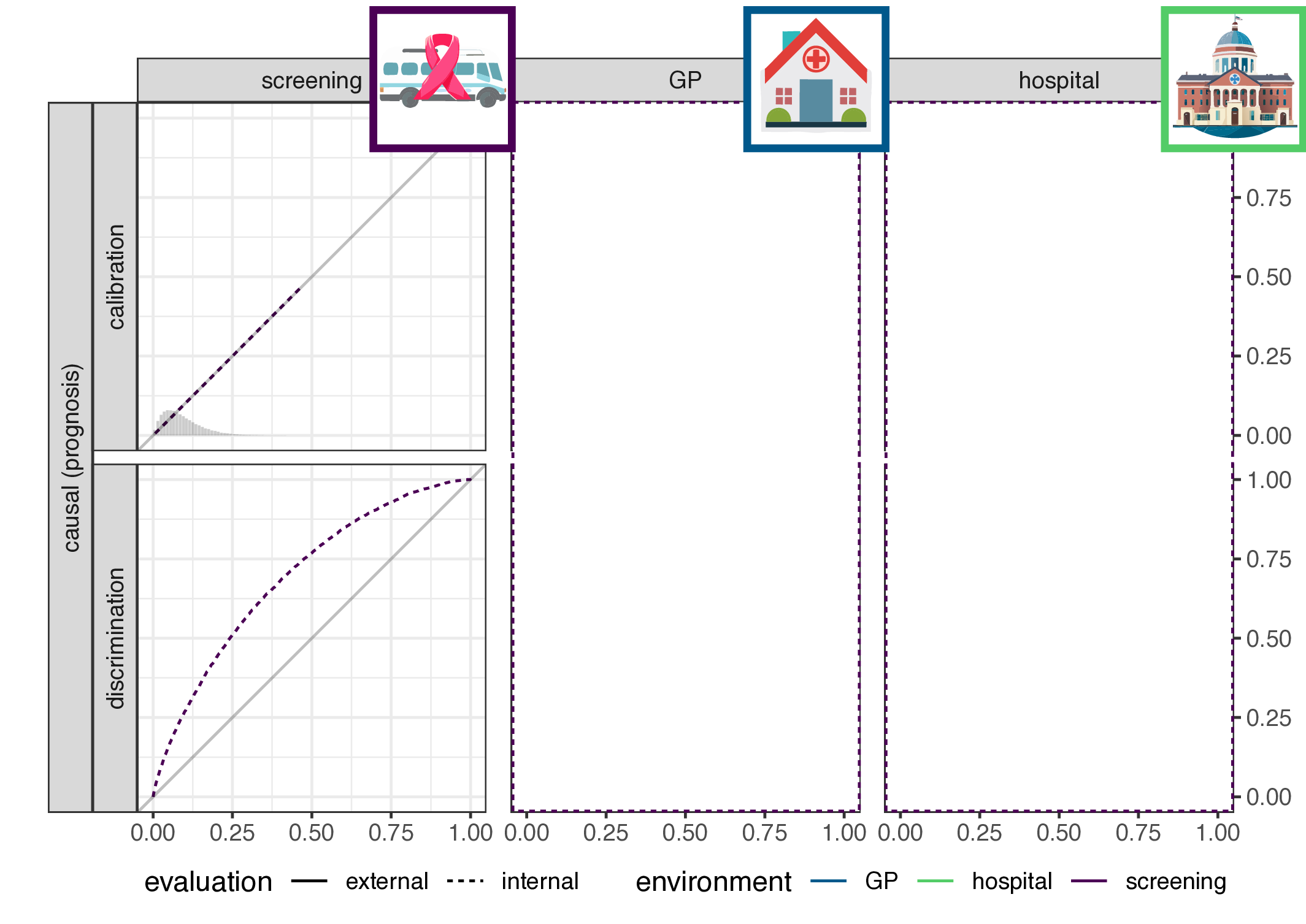
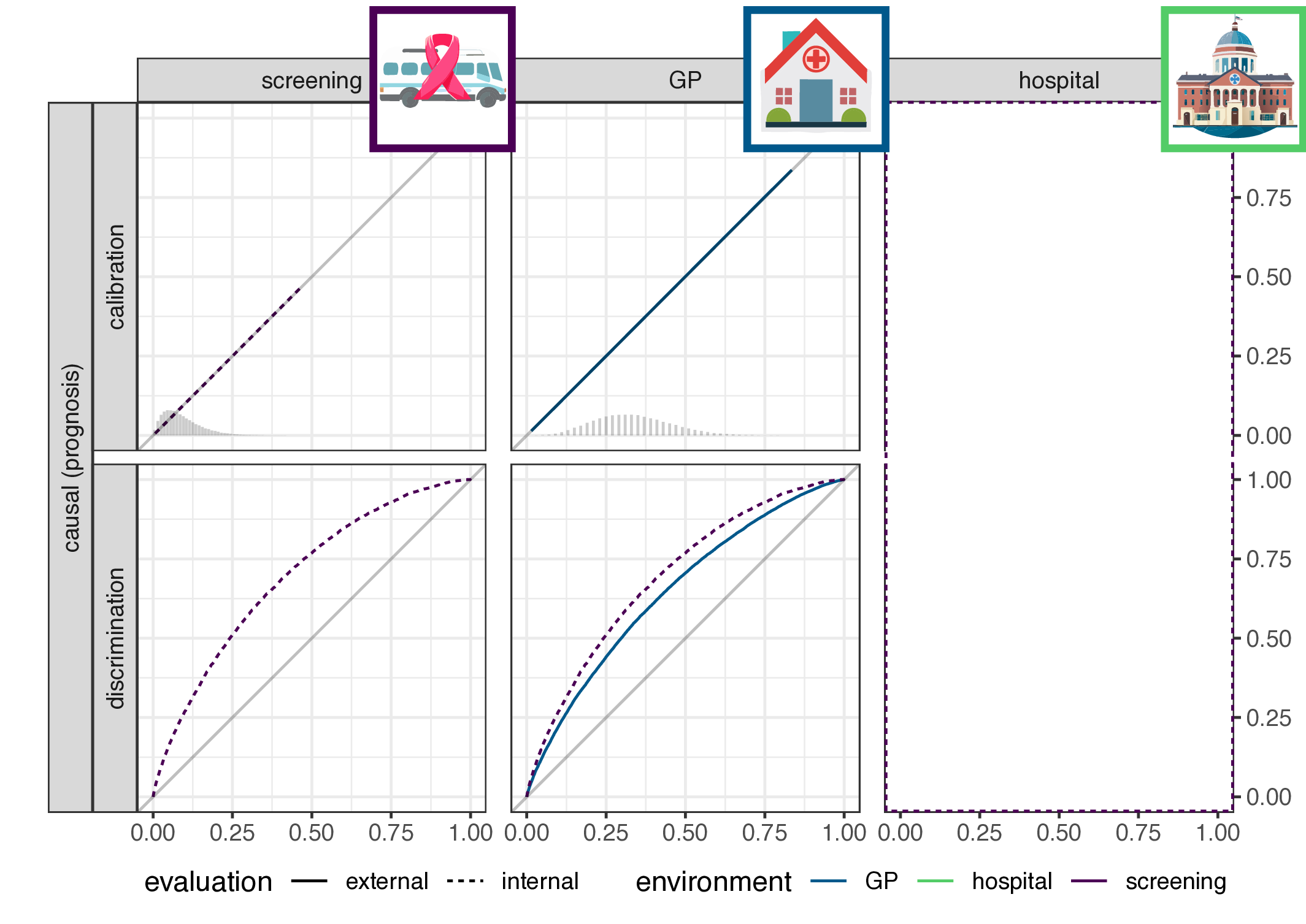
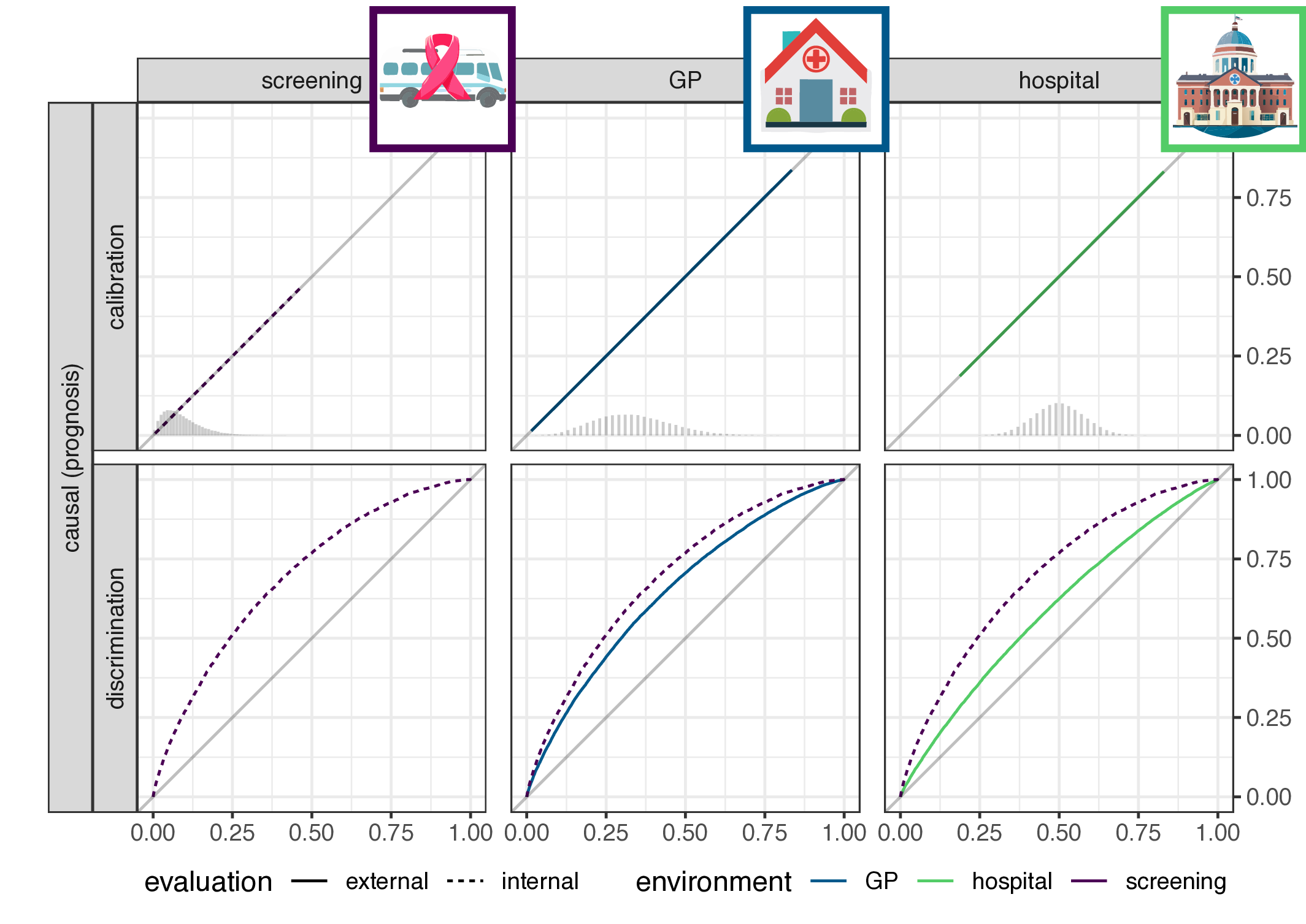
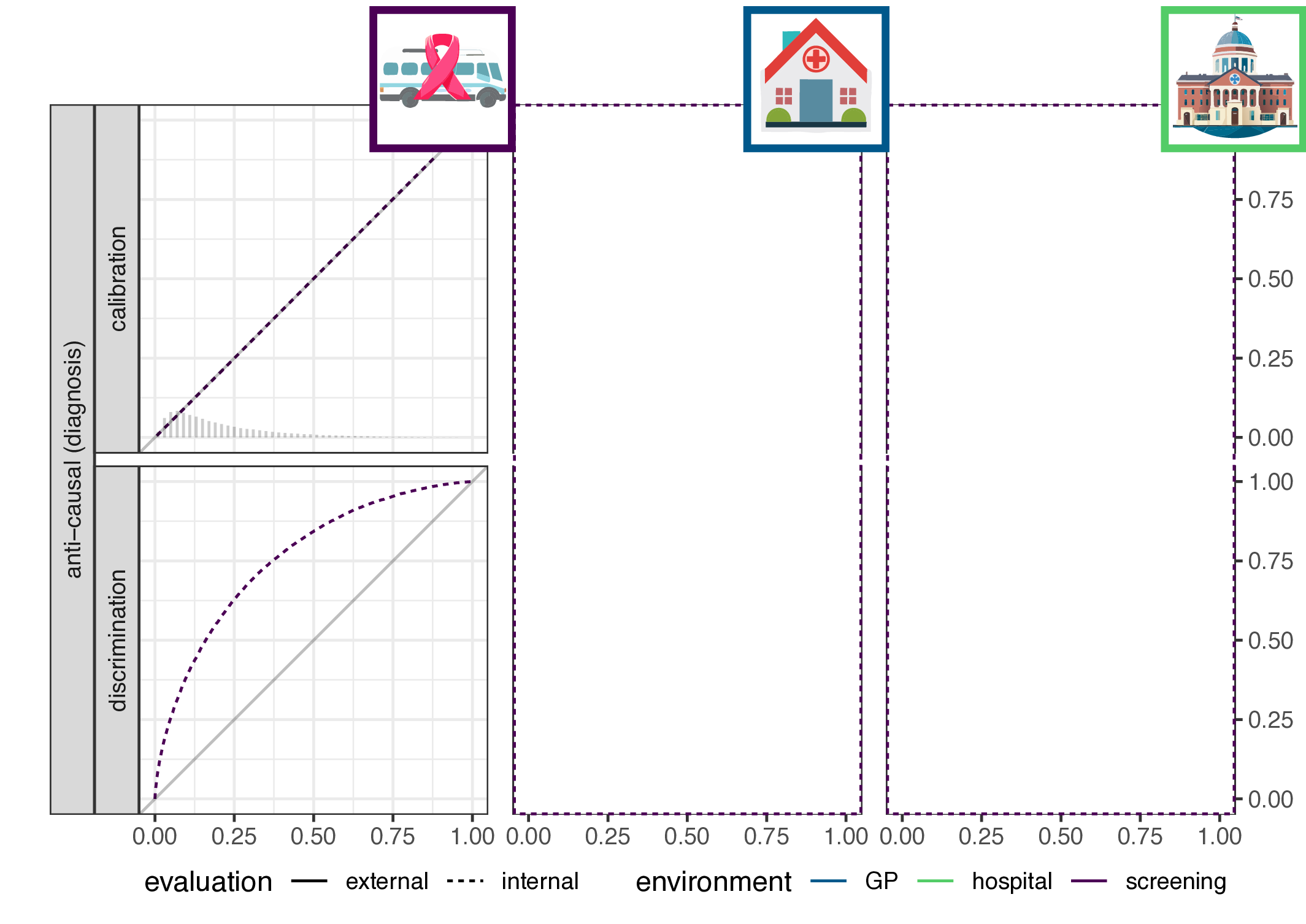
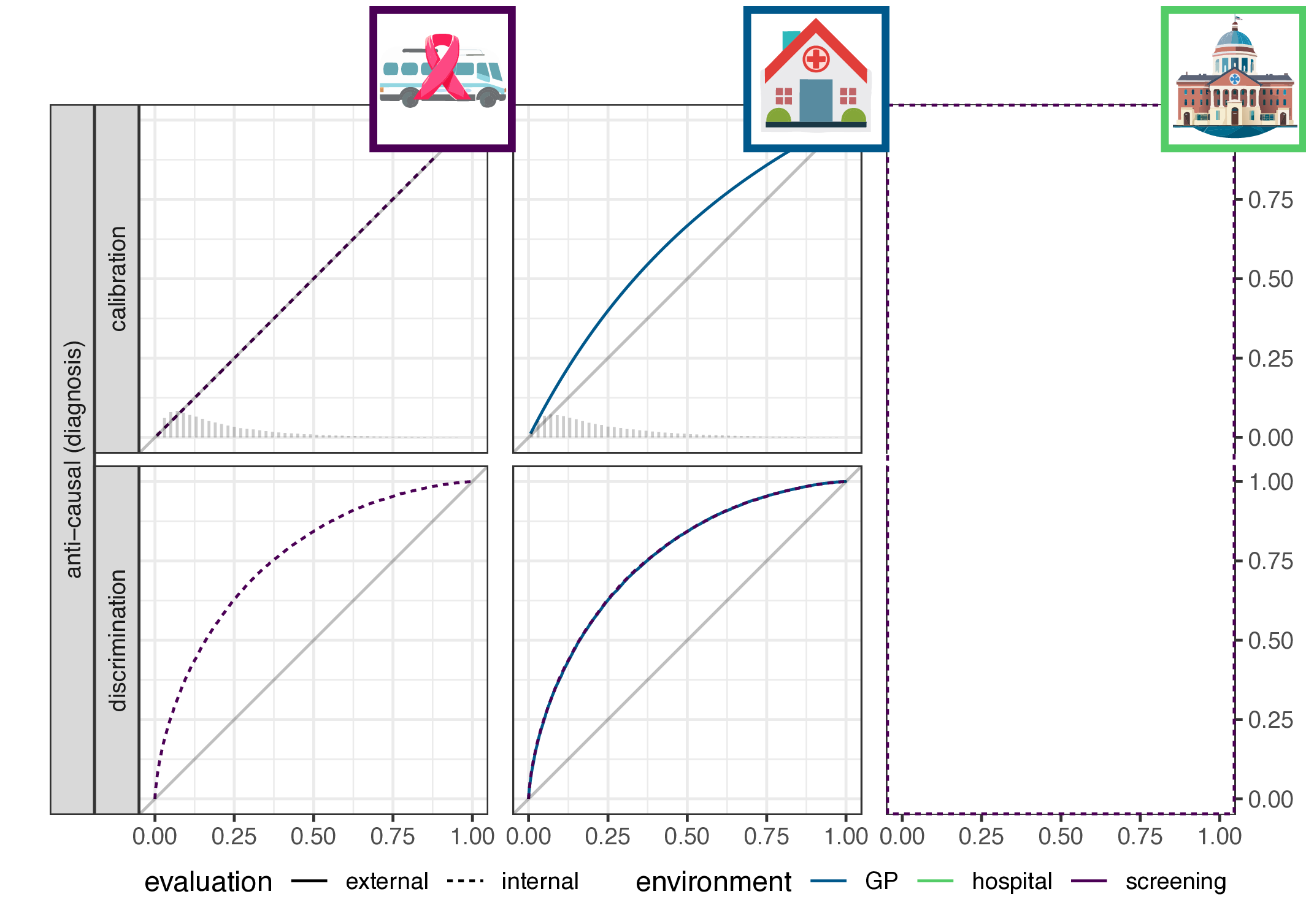
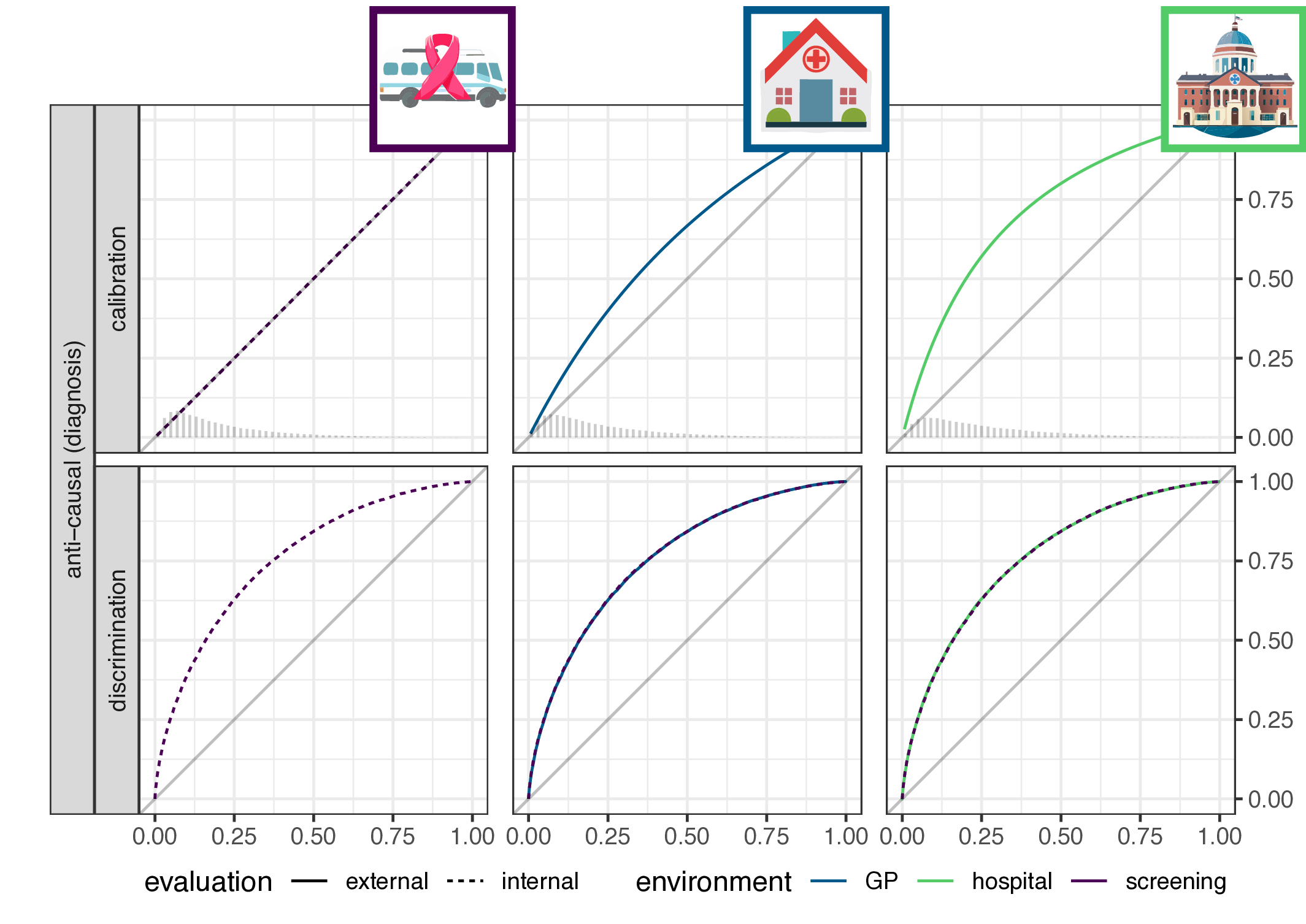
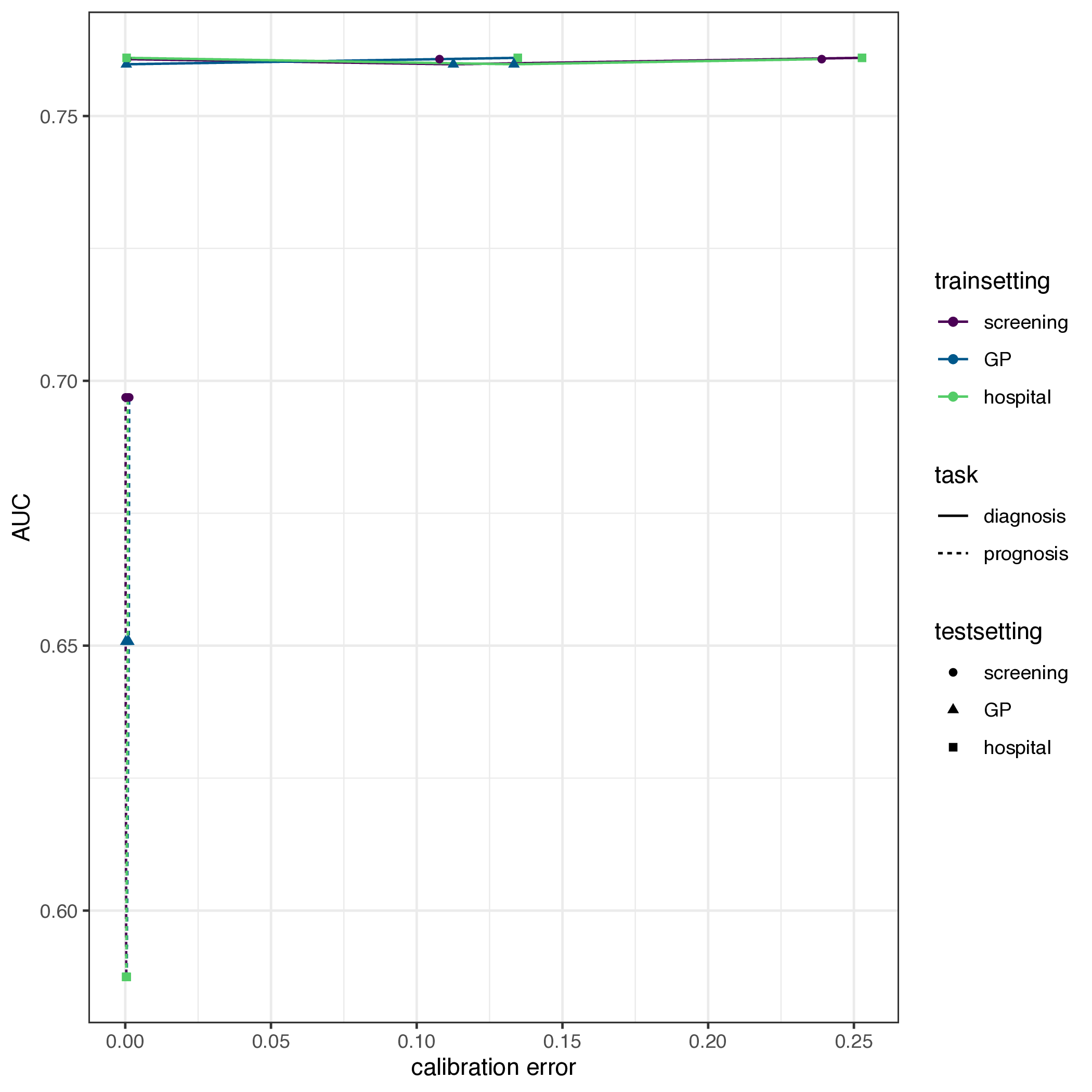
Empirical evaluation
- a study of 2030+ evaluations of 1300+ prediction models (Wessler et al. 2021)

- registry: all data available with only 4000 clicks
- solution: scrape the website
Results
- for each study, extract AUC on internal validation and for each external validation (no calibration data available)
- calculate scaled deviation from internal AUC (\(\delta\))
- theory implies:
- for prognosis models: \(\delta \neq 0\)
- for diagnostic models: \(\delta=0\)
- test: variance of \(\delta\) between evaluations of diagnostic or prognostic models (F-test)
- result: \(\text{VAR}(\delta_{\text{prognostic}}) \approx 8.2 * \text{VAR}(\delta_{\text{diagnostic}}) = 0.019\), p-value\(<0.001\)
Conclusion
- discrimination: a function of distribution of features given outcome
- calibration: a function of distribution of outcome given features
- are we predicting an effect based on its causes (e.g. heart attack, based on cholesterol and age)
- are we predicting a cause based on its effects (infer presence of stroke based on neurological symptoms)
- define shift in case-mix as a change in the marginal distribution of the cause variable
- conclude that in theory:
- for prognosis models: expect stable calibration, not discrimination
- for diagnosis models: expect stable discrimination, not calibration
- illustrated with simulation, evaluated on 2030+ prediction model evaluations, one direction of theory seems confirmed
- future work: more empirical validations
References
©Wouter van Amsterdam — WvanAmsterdam — wvanamsterdam.com/talks